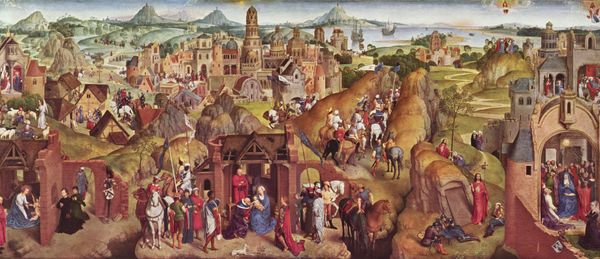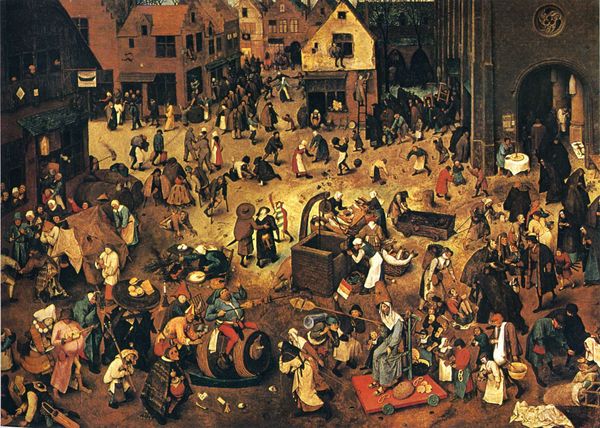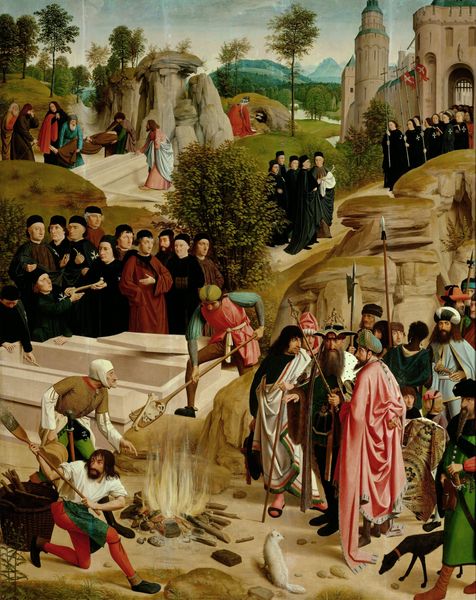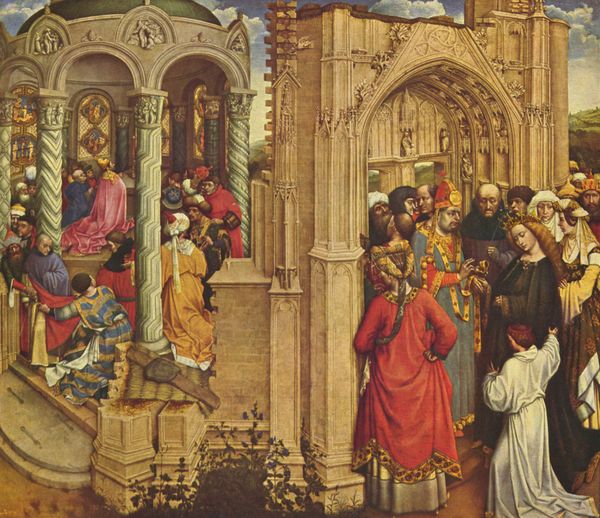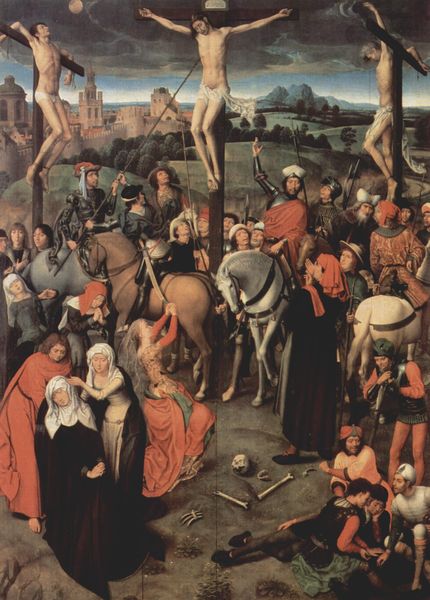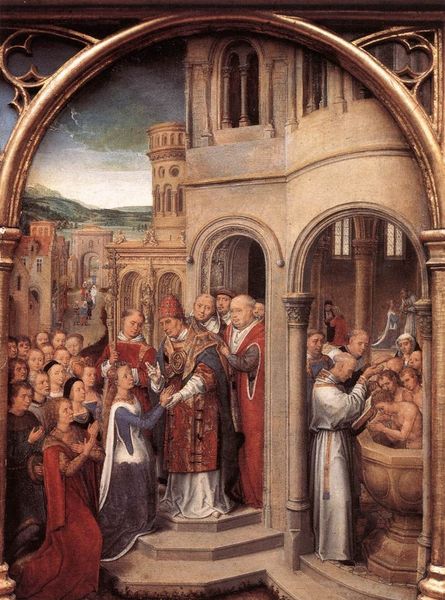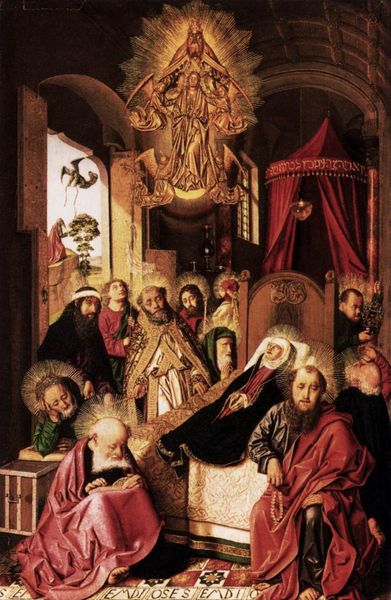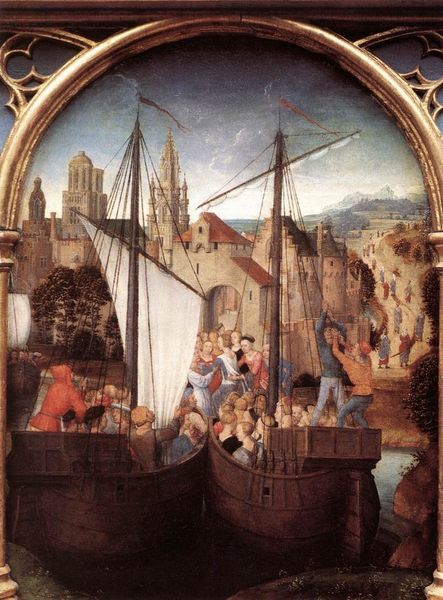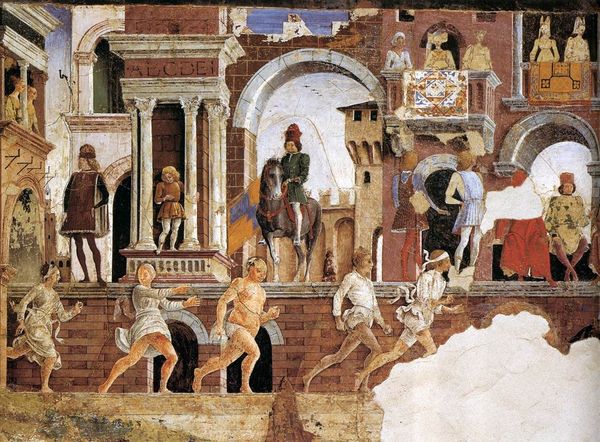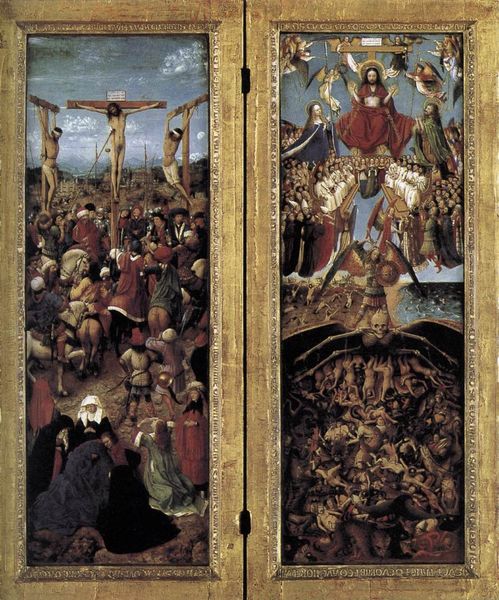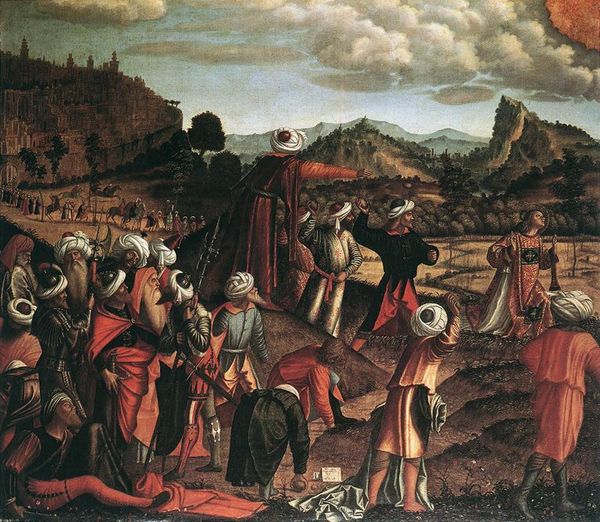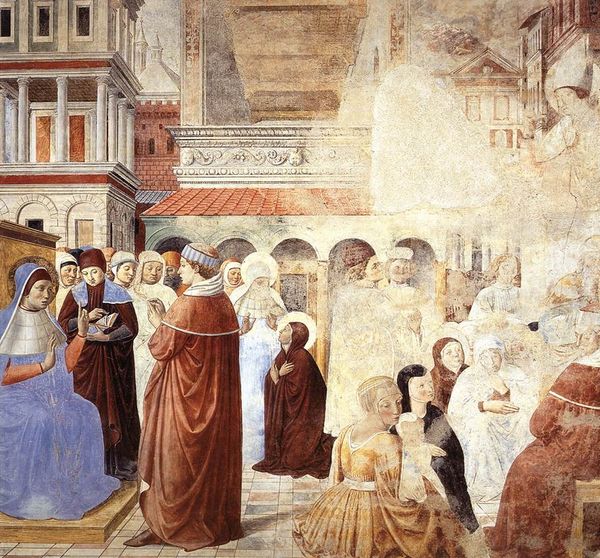
painting, oil-paint, fresco
#
medieval
#
narrative-art
#
painting
#
oil-paint
#
holy-places
#
fresco
#
cityscape
#
history-painting
#
early-renaissance
#
mixed media
Copyright: Public domain
Hans Memling rendered this panel from the “Scenes from the Passion of Christ” with oil paint, sometime in the late 15th century. Paintings like this were made possible by an early Northern Renaissance emphasis on oil-based pigments. Instead of egg tempera, which dries quickly, oil allows for much slower and more deliberate work. This helps explain the detail here. Look at the crisp rendering of the architecture, and the many figures populating the scene. Each of them would have been carefully considered, and underpainted in layers to achieve an illusion of depth. The use of oil also enabled Memling to achieve effects of glazing, adding translucent layers of color over the underpainting to create luminous effects. The artist’s skillful use of his medium is evident in the rich details and vibrant colors, contributing to the painting's lasting appeal and significance. This wasn’t just a technological breakthrough, it was also a shift in sensibility, toward greater naturalism and, perhaps, an appreciation for labor-intensive craftsmanship.
Comments
No comments
Be the first to comment and join the conversation on the ultimate creative platform.
